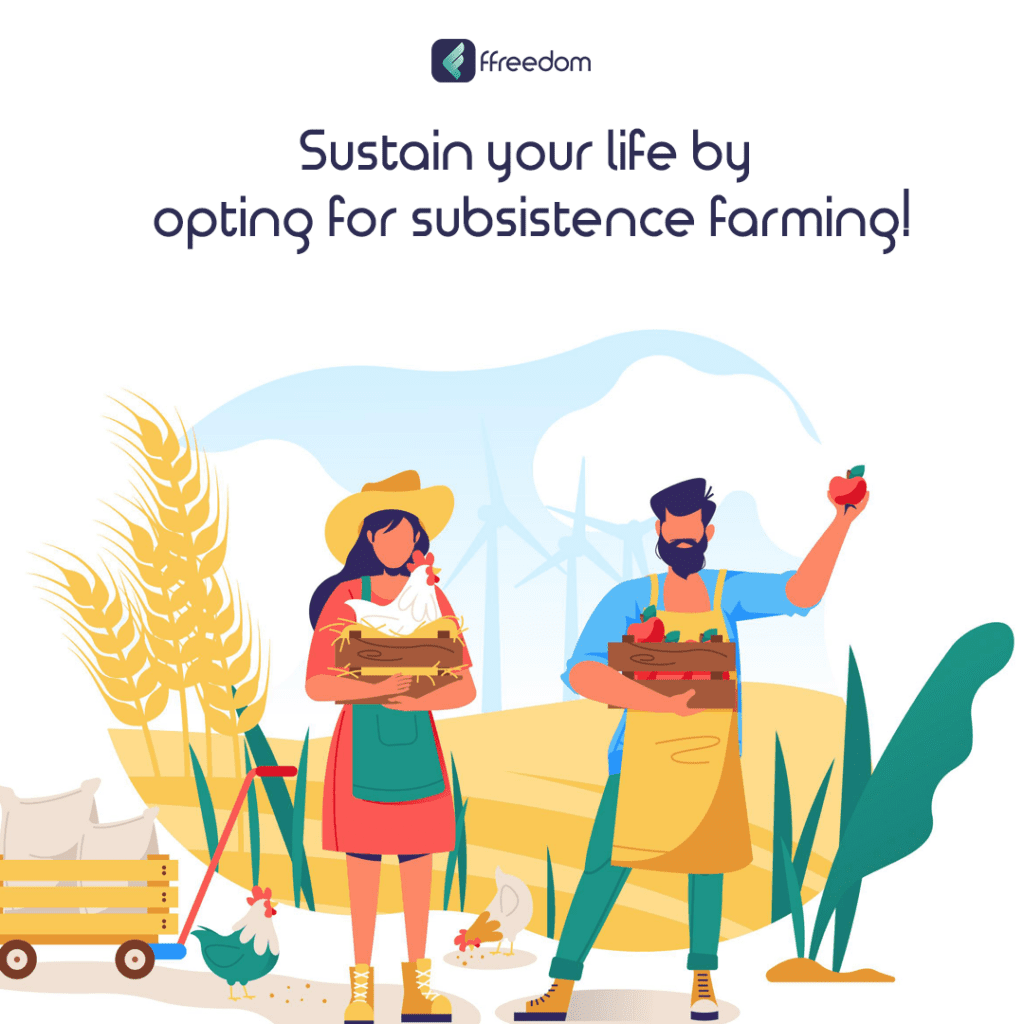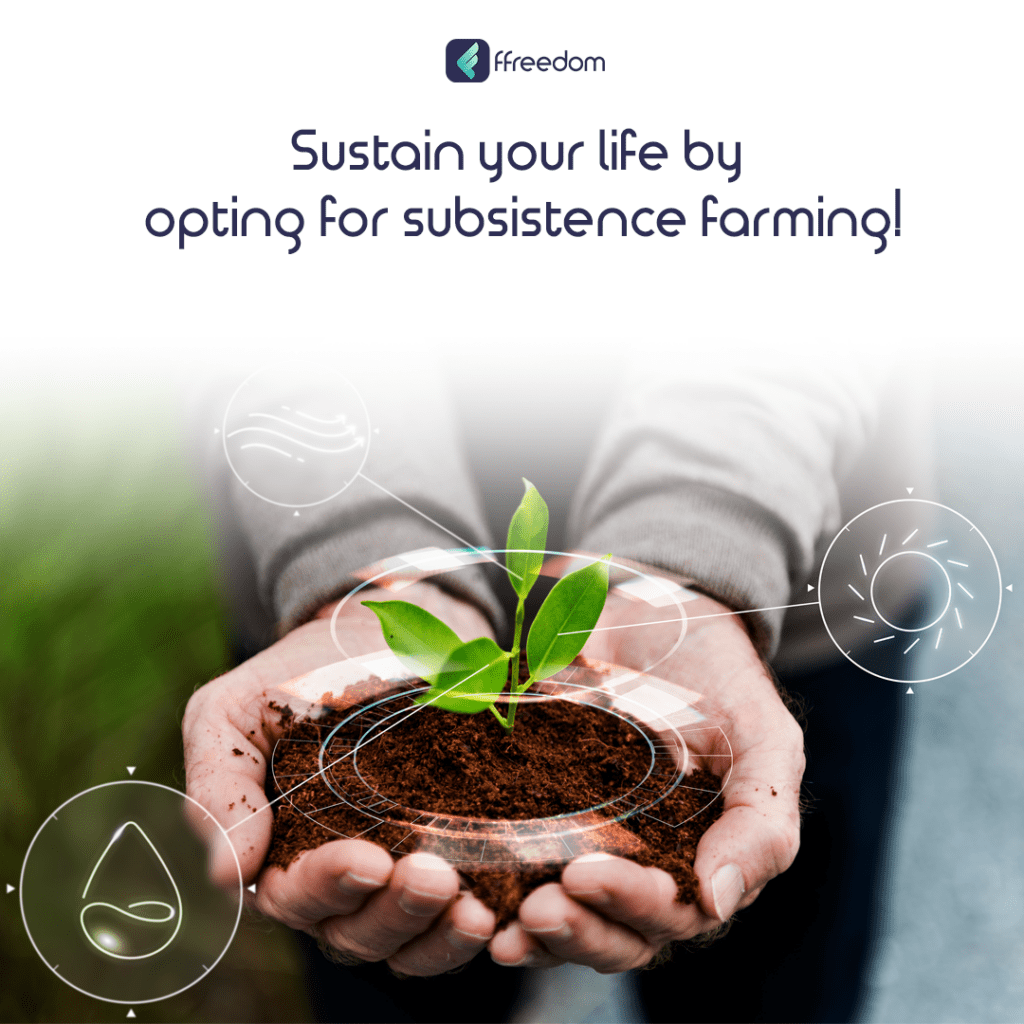Introduction
Self-sufficiency is achieved by the practice of subsistence farming, in which farmers only produce enough food for their own needs. Production and consumption are immediately related to one another.
The survival of the family is the primary objective of this type of farming.
Rural farmers are generally drawn to subsistence farming because it gives them access to enough food, lowers the cost of transportation to cities, and gives them the chance to stay in rural locations where living expenditures like housing and land are less expensive.
Additionally, it signifies that a family that engages in subsistence farming is self-sufficient in terms of food and doesn’t require any borrowing from or outside purchases.

Features of subsistence farming-
1. Labor
On a subsistence farm, only the families and sometimes a few others are permitted to labor. However, since we are all in self-quarantine, it is the responsibility of the family to work the land. It is less expensive to practice subsistence farming since it requires fewer workers and less financial investment.
2. Land:
Since the primary objective is just to produce food for the family’s consumption, subsistence farming often only requires a modest amount of land, about 1 to 3 hectares.
Larger acreage could be required if farms were to be larger. Farmers can think about making investments in their energy and farming equipment if they want to keep larger areas.
3. Productivity and Effectiveness
Subsistence farming is characterized as having little inputs, most of which are supplied by the farmer himself. Farmers just need to produce for their own food supply, which is excellent, especially during this epidemic, therefore total production is typically low. They might try to raise their products without the use of pesticides and fertilizers by practicing subsistence farming. Farm animals including chickens, ducks, and gooses may be helpful in the procedure.
4. Powered and Moving
Almost all aspects of subsistence farming are carried out without the use of elaborate machinery. Farmers plow the ground while performing routine duties like crushing sugar cane and moving goods. Most of the technology is fairly basic. For larger farms, solar panels could be a wise investment because they offer sustainable energy and aid in long-term cost savings.
5. Earnings and Standard of Living
The income and standard of life of the majority of agricultural producers are below the poverty threshold since they depend only on their own harvest and don’t have to worry about cultivating crops for additional money.
Even if they are doing this for self-sufficiency, subsistence farmers still have to spend money on raising their crops and livestock. As a result, the crops may not produce any additional revenue except food. Depending on the circumstances, farm animals could generate a little amount of revenue.
6. Livestock’s Importance
It is crucial that you look after your animals at this time. Farm animals serve as a specific safety for farm families as well as a form of insurance for farmers. When the lockdown and epidemic are finished, it can be used for expenses, sold during a crop failure, or devoured. Additionally, the subsistence farmers have free access to meat, eggs, and other livestock products.
Farm animals can provide farmers with little source of income. Small natural substance markets could sell items like sheep wool, chicken eggs, geese eggs, quail eggs, cow milk, and goat milk, among others.
7. Risk and Reasonability
If adjustments can be made to work with their present farming practices, subsistence farmers may be encouraged to increase their level of life. They are now psychologically prepared to take chances and benefit from new contributions.
8. The Uncertainty Factor
Uncertainty is a factor to take into account when farming, just like with any other type of farming. Crop failure is a constant danger that might devastate a farmer. In light of the present situation, it is necessary to keep a closer check on the crops.

Benefits of Subsistence Farming
1. Cheaper farming techniques
The pricey machinery required for commercial farming, such as tractors, mechanical weeders, cow milkers, and potato harvesters, is not used in subsistence farming.
Farmers, unlike those who practice modern agriculture, control weeds, and the soil to grow healthy crops that are ready for harvest.
2. A Promising Source of Work
One does not need a high degree of education or specialized skills to start a subsistence farm. It suffices to be able to use a cutlass and a hoe, which are basic farming abilities.
People may enter subsistence farming more easily since planting is also based on the customary local schedule.
3. Effective Planting Practices for Perennial Crops
Perennial crops are grown, seeds are saved, and perennial crop planting is utilized by those who practice subsistence farming. Because perennial grains don’t need to be replanted, they offer the following advantages:
- Utilization of yearly precipitation – Because the roots of perennial crops extend deeply into the earth, the plant is able to access water reserves there. The roots are always in the ground, so they have access to a lot of precipitation that is accessible.
- Reduces soil erosion – Perennial crops have vast root systems that extend eight to ten feet into the ground. The soil won’t erode due to this type of fortification. The requirement for nitrogen fertilizer is also decreased due to the decrease in topsoil washing away.
4. Avoid Rural-Urban Drift
Many individuals who have long been reliant on subsistence farming and who have lived in rural regions enjoy their own modest ways of life. The majority of them do not find a compelling reason to choose a life in the city and could not afford sufficient housing.
These individuals don’t want to shift from the rural to the city since they are happy with the food that the land can provide. This desire encourages villagers to stay in rural regions, hence reducing rural-urban migration.
Final words
Starting a new business may appear to be an impossible endeavor from a distance, but as you become more familiar with the fundamentals, your confidence and knowledge will also begin to grow. Therefore, it’s vital that you maintain your focus and discipline after a strong start. You now have a solid grasp of the key elements and essentials needed to thrive in this industry. For further information, you can check out the ffreedom app and find a variety of courses and modules in this industry for a clearer and better comprehension.




